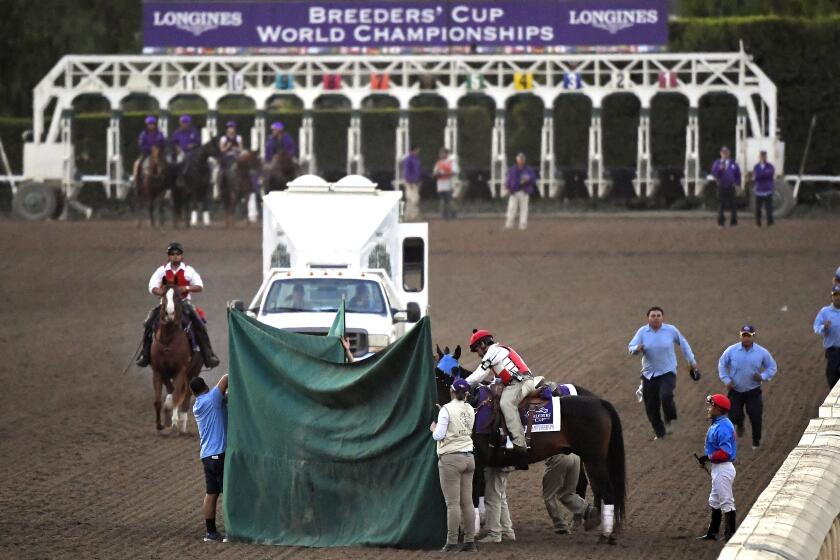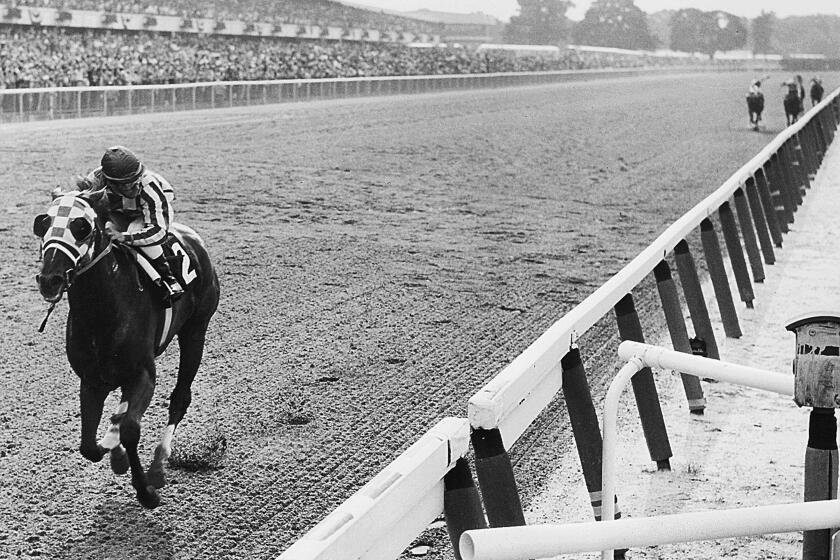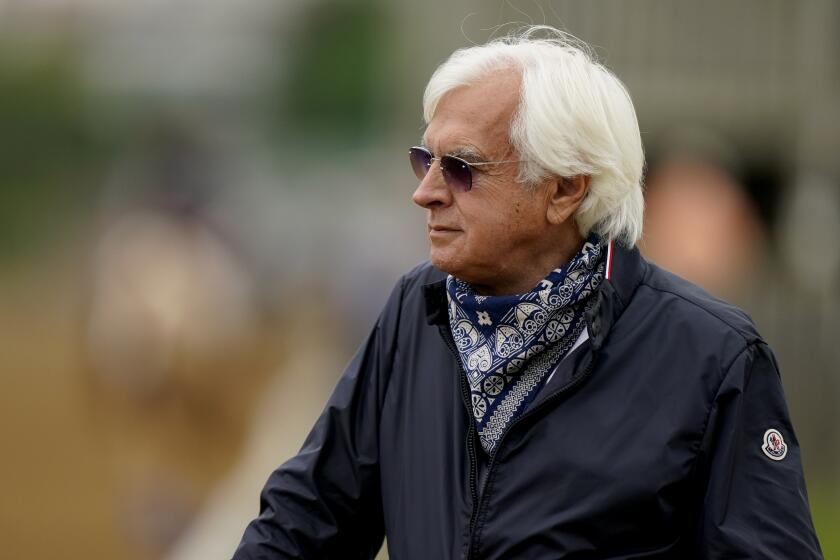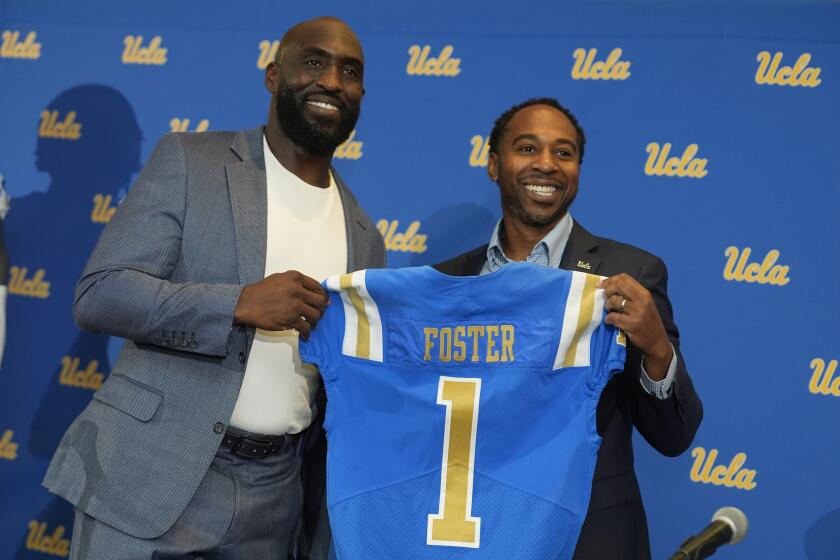
Frank Stronach was a hands-on boss and always thinking of the future, his vision dominated by his love of horse racing.
So, it was in that spirit that in 2006 he took Robert Hartman, his general manager of Golden Gate Fields, on an hour drive from Albany to the little town of Dixon, about 20 miles from Sacramento.
“We get out of the car and stand in the middle of nothing, and he says, ‘We’re going to build a race track here,’” said Hartman, now chair of the University of Arizona’s renowned Race Track Industry Program.
“It was a Field of Dreams kind of moment,” Hartman said. “I looked around and thought, ‘This is insane. What are we doing in this field next to I-80?’”
Stronach, then head of Magna Entertainment Corp., which became The Stronach Group, owner of Santa Anita and Golden Gate Fields, had bought 260 acres in this town of about 15,000 people. His plans were to build a smaller-scale race track that looked like a Florentine villa, with open spaces and rows of trees, connected to an entertainment and retail complex.
Not everyone in Dixon was happy with the idea of development and they demanded a series of ballot initiatives.
Stronach did everything he could to save the project. He promised to not have casino-style gambling or slot machines, should that option become available. He offered to turn the infield into athletic fields open to the public and construct a 20,000-square-foot indoor practice venue and build a baseball field on the property. He even promised to close the track during tomato canning season, in deference to the local Campbell Soup Company plant.
But on April 17, 2007, the initiatives were voted down by an average of 300 votes. The plan was dead. TSG sold the property in 2021.
“Now that I look back and understand that going to Dixon would have been the best possible thing we could have done,” Hartman said. “The land at Golden Gate Fields was always going to be so valuable and racing is not the optimal use of 80-plus acres on the San Francisco Bay.
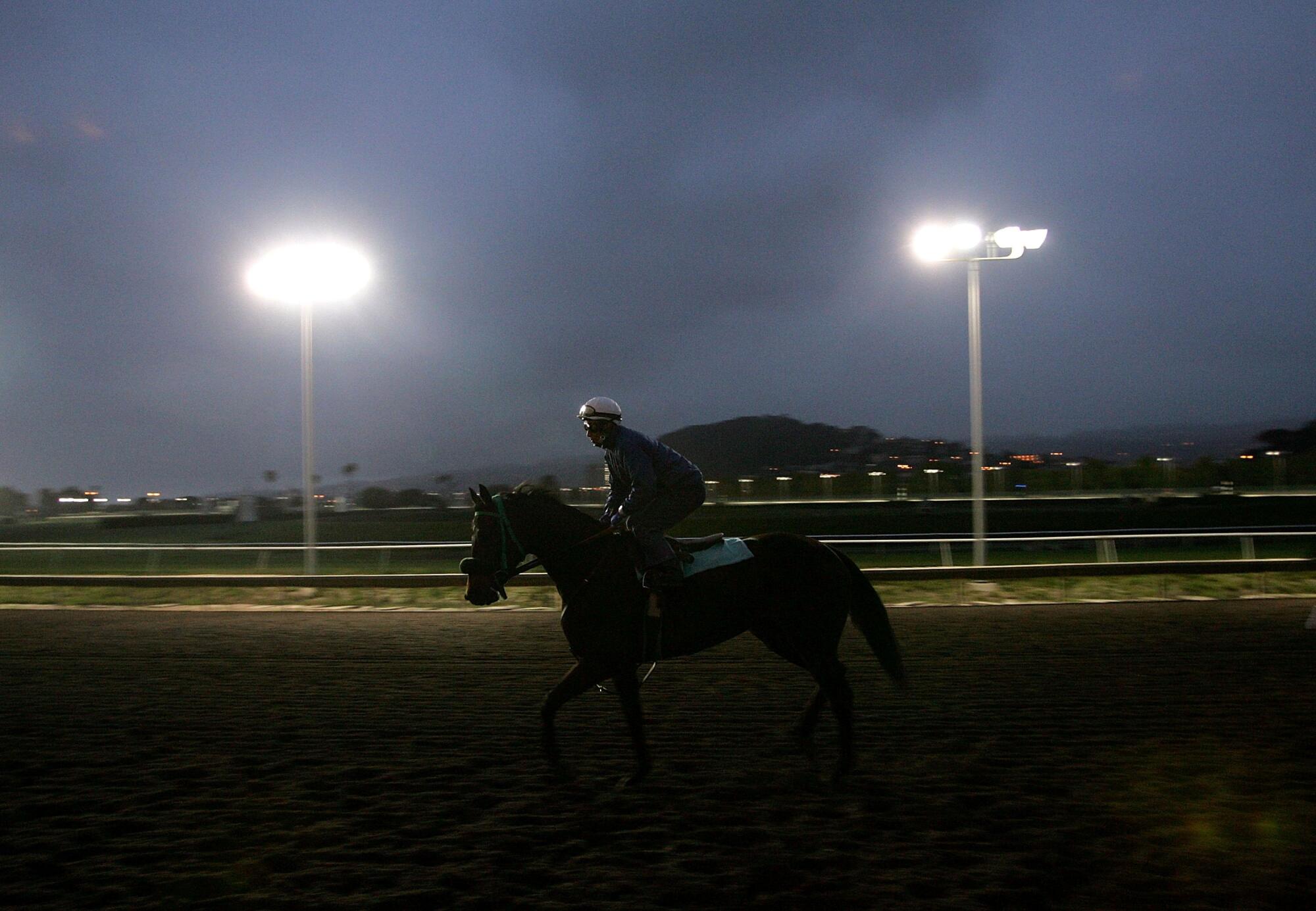
“If we had the vision that Frank had over a decade ago and moved Golden Gate out of the picture and moved to Dixon, the sport could be in a very different place. Cheaper land might have been more economically viable.”
TSG announced this year that Golden Gate Fields will be closing next summer, giving the Northern California racing circuit an extremely uncertain future. The Southern California circuit hopes it can benefit and strengthen its tenuous grip on the future. Any way you look at it, horse racing in California is at a major inflection point with a future as unclear as a typical morning in Point Reyes.
The Times interviewed almost two dozen people about the future of California racing earlier this month. The question is did 300 Dixon residents set the course for the future of the sport in 2007, or are the problems much deeper? Most of all, can racing in California survive?
To understand where racing in California is going, you first have to recognize its past. There was a time, before the lottery, before casinos, before off-track wagering, that the only way to legally gamble was to go to the track.
Santa Anita opens its winter meeting on Tuesday . Last year, more than 40,000 people were announced as attending on what has become one of the biggest days of the year. Between 1986 and 1989, Santa Anita reported on-track attendance at more than 60,000.
“The history and legacy of California racing is vital to the sport of horse racing,” said Pat Cummings, executive director of the National Thoroughbred Alliance and former head of the Thoroughbred Idea Foundation. “It’s such a part of the fabric of horse racing.
“Someone asked me if there has ever been a Ken Burns-like documentary on the history of horse racing. I said the closest we’ve come to that was the movie “Seabiscuit”. It took people back. It was Ken Burns-style storytelling and it was done by Hollywood.”
Seabiscuit considered Santa Anita his home and a statue of him stands in the paddock.
The size of a race horse and its natural instincts make it nearly impossible to survive serious injuries at the track, but many are trying to improve the odds.
“California is second only to New York in stature and importance,” said Alex Waldrop, who was chief executive at the National Thoroughbred Racing Assn. for 15 years and is now a consultant for the Horseracing Integrity and Safety Authority. “You can’t underscore how important is it to have racing on both coasts.
“I hesitate putting New York over California because you could argue either way. But over time, the number of tracks in California has been reduced. In prominence, there is still no question it is up there.”
California had been running two circuits, one in the North for lesser horses and the more prestigious one in the South.
Then tracks started disappearing. Bay Meadows in Northern California closed in 2008, Hollywood Park, at the location that is now SoFi Stadium, stopped racing in 2013, and the L.A. County Fair Meet at the Fairplex in Pomona ended in 2014 and moved to Los Alamitos.
“I was the general manager of Golden Gate when Bay Meadows closed,” Hartman said. “I wouldn’t say we were high-fiving when that happened, but we thought we were going to get all the racing dates and we were going to be even more profitable.
“It was probably the worst thing that could have happened to Northern California racing when Bay Meadows closed. If you lose one track in that racing ecosystem, it’s just so hard to recover. It hurt us in the long run, it didn’t help our business.”
It was the worst thing that could happen until July 16 of this year, when TSG clumsily announced that Golden Gate would close at the end of the year. TSG later extended the end date by about six months in exchange for simulcast money considerations.)
The owner of Golden Gate Fields agreed to keep the track open another six months after initially planning to close at the end of 2023.
TSG did not tell the thoroughbred owners and trainers of their intentions until it learned The Times was publishing an article about the closing . It hastily called stakeholders and even some senior Golden Gate employees who did not know this was happening. So, TSG moved up the announcement … by one day.
The company, however, was transparent about its rationale to prop up Santa Anita and add racing days to the South.
“We believe that the future success of racing depends on a business model that encourages investment in Southern California, one of North America’s premier racing circuits,” said Belinda Stronach, chief executive and president of TSG. After a public feud over the direction of the family business, Belinda and her father, Frank, split the company, and she took control of the racing properties.
By saving Santa Anita, it meant that to some degree racing in Northern California had to be sacrificed. Or maybe it was time for California to consider just one circuit. Yet could that be done without also hurting the South?
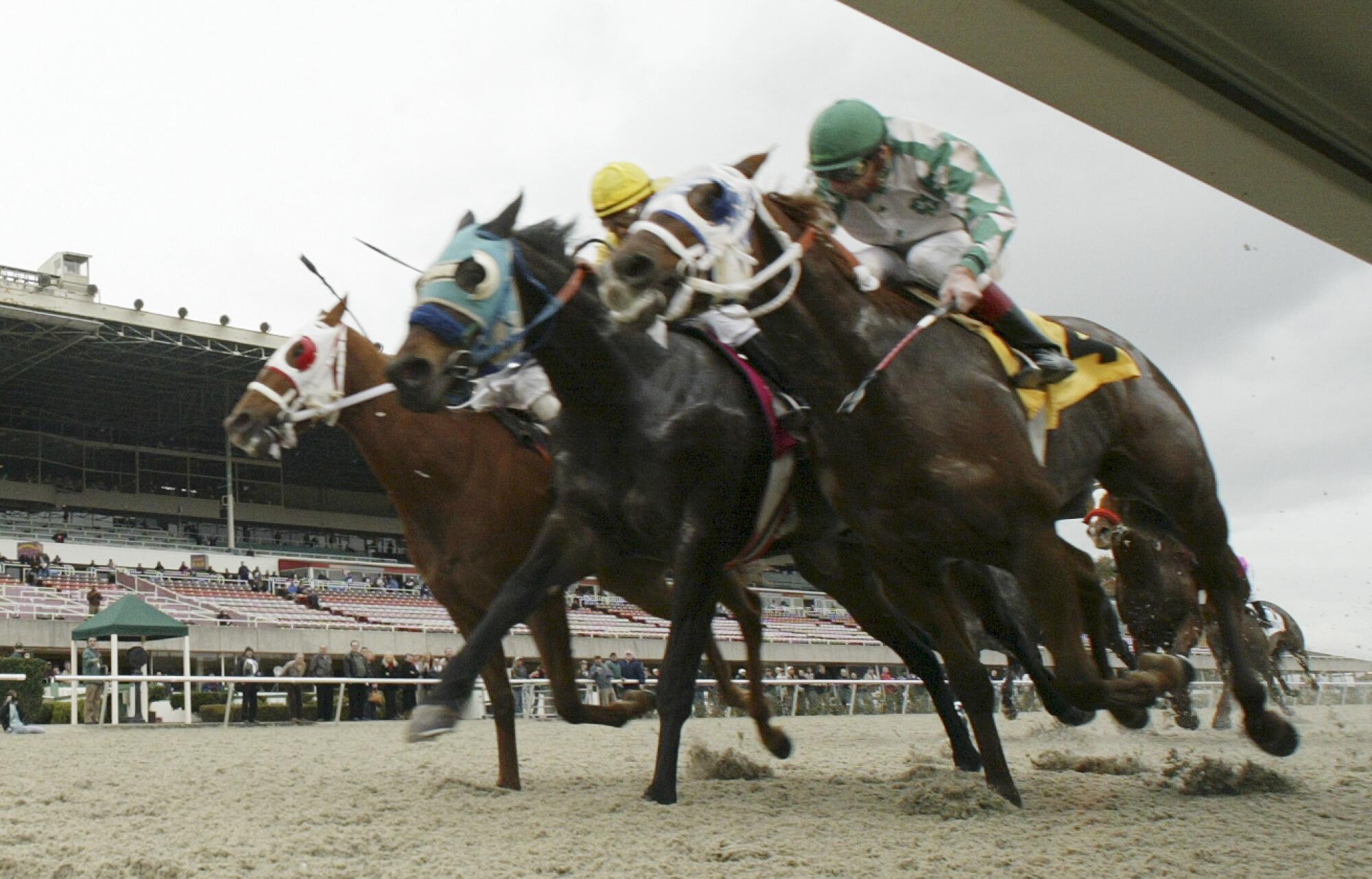
The closing of Golden Gate had been rumored for 30 years. It’s always been in the back of people’s minds.
“We tried very hard at Golden Gate,” said Craig Fravel, executive vice chair of racing and gaming at TSG. “This is a hugely labor intensive business on both the horseman side and the on the track side. That creates challenges.”
Golden Gate’s closing has two effects — a business one and a personal one. One pragmatic and the other gut-wrenching.
“It’s heartbreaking for the people who have been part of the Northern circuit,” said Bill Nader, president and chief executive of the Thoroughbred Owners of California. “It’s the second part of a one-two punch. The first was to lose Bay Meadows and the second was to lose Golden Gate.”
Last week, the TOC and the three Southern California tracks said they now have “suitable opportunities to stable all horses from the North.”
There are about 1,000 horses at Golden Gate. The population in the South is around 2,000.
“It eliminates speculation or uncertainty,” Nader said. “We’ve got a place for everyone in the North in Southern California.”
Even after 50 years, Secretariat is the standard against which all horses are measured. His Kentucky Derby, Preakness and Belmont records still stand.
It wasn’t explicitly spelled out but the TOC and operators clearly favor one circuit, located in the South, with the exception of racing at county fairs in the North.
“Should an operator [in the North] come forward with the financial backing and operation plan to address the key criteria, capital investment for a turf course, pension liability, environmental compliance and an ability to guarantee purses, we would be very open to that,” Nader said.
“The last thing I would like to see is coming up with a plan for the North, and then after a few months see that it doesn’t work and they get their heart broken again. On one side, you say let’s give it a try, but on the other hand, how do you fund that as an operator? It would be an expensive roll of the dice.”
Yet sometimes you lose no matter which number you roll.
“With what’s happening in Northern California and its effect on Southern California, it’s incumbent on stakeholders and us to get it right otherwise our expiration date is sooner rather than later,” said Scott Chaney, executive director of the California Horse Racing Board.
“I don’t know if that’s 10 years from now or 20 years from now. I’m kind of an optimist and believe we have all the pieces in place [to keep that from happening]. We’ve done all the work on the animal welfare piece, which meant repairing state government, and we have good relationships with citizens and even animal welfare groups.”
When the plan to close Golden Gate was announced, the presumption by TSG was that many of those horses would come South. It’s a plan privately disputed by many, including some at TSG, who did not want to speak publicly against the company’s position.
Greg Ferraro, chairman of the CHRB, said shortly after the announcement: “No more than 20% of the horses would qualify to race in the South. I don’t think there is much support for $5,000 claimers down there.”
That concern is echoed by others, bolstering the support for a circuit in the North. It’s a fact that horses on the “B” level (Golden Gate) aren’t competitive on the “A” level (Santa Anita and Del Mar).
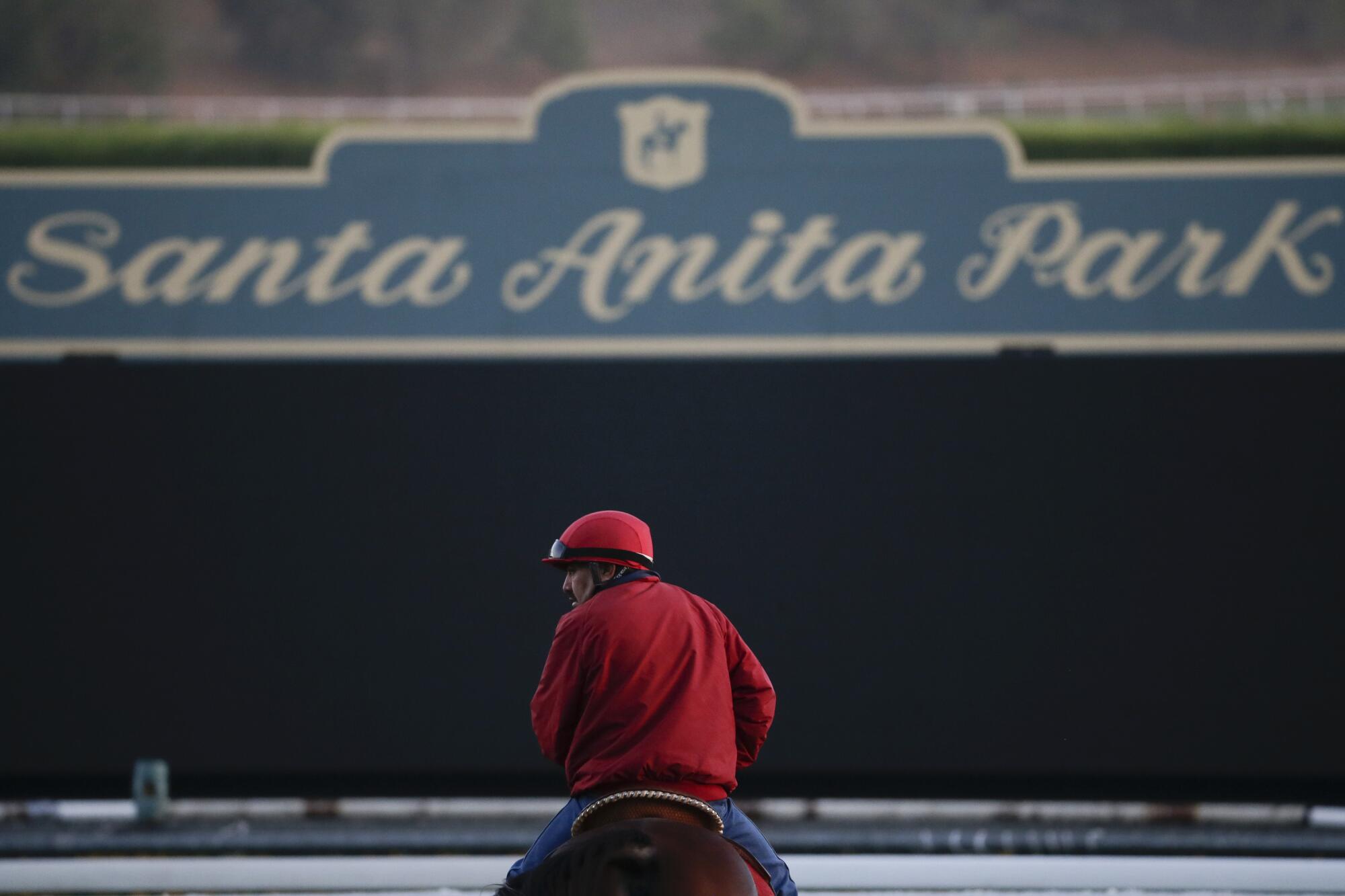
“You hear a lot of people say those horses are just going to go to Santa Anita and that’s the farthest thing from the truth because there are two different classes of horses,” said Eric Hamelback, chief executive of the Horsemen’s Benevolent and Protective Assn., the largest horseman’s group in North America.
“As far as I was concerned, it’s just like North and South Carolina, you need a Northern and Southern California when it comes to the racing industry. You don’t see a group of horses shipping from Turf Paradise [in Arizona] to Santa Anita, they would be going to Golden Gate at the time. To me those Golden Gate horses fit in Oregon, Washington and Colorado and maybe British Columbia [but not at Santa Anita].”
Alan Balch, who has been a racing executive for five decades and is currently the executive director of the California Thoroughbred Trainers, thinks we should look to history to guide the industry through its current predicament.
“There was a single circuit when the foal crop was what it is now,” Balch said. “ADW (advance deposit wagering) and simulcast have made things different. But I would think the track operators would try and fit the racing schedule proportionally to the number of active horses we currently have.”
The foal crop, the number of horses born each year, has declined 18 of the last 19 years and is currently at the level it was in 1964.
Jay Privman, who reported on racing both nationally and in California for more than four decades before retiring from the Daily Racing Form last year, is fearful of the consequences of closing Golden Gate.
“I would say racing is at its most difficult point since I started covering the sport because of the closure of Golden Gate,” Privman said. “The state has never faced a challenge this significant. And we’ll see how it gets handled in the second half of the year [after Golden Gate closes].”
Chaney is also trying to figure out what it would look like.
Bob Baffert has cultivated the story of a horse racing dynasty built from humble roots. He now faces scrutiny about short cuts he’s alleged to have taken.
“We don’t know what Northern California racing is going to look like and when we do, it’s still going to look unclear,” he said. “The economics are not great of operating a track in Northern California particularly if you are not Golden Gate Fields. [If there are new operators] they wouldn’t own Santa Anita and Gulfstream [like TSG], who are real players in the country and can move simulcast deals.”
There is a potential solution to the Northern California problem being floated by the California Authority of Racing Fairs. Most consider it a longshot.
According to Larry Schwartzlander, executive director of CARF, the fair circuit would take over most of the Golden Gate dates but reducing the number from around 132 days to 103. He said they would keep the purse and stakes structure the same as Golden Gate, which became a lot easier this month when TSG dropped purses at Golden Gate by 25%.
Then there is the question of where to run.
“We all knew Golden Gate was gridlocked, the attendance was poor and it was going to go away,” Schwartzlander said. “The challenge is for us to handle the racing. Our tracks, Santa Rosa, Pleasanton and CalExpo (Sacramento) are all major tracks. Santa Rosa has a turf course and we could easily put one in at Pleasanton.”
Schwartzlander did not want to specifically address the fact that CalExpo also has harness racing, which could complicate the use of the facility.
“It’s feasible to see both thoroughbred and harness at Cal Expo,” he said. “That’s one option. Pleasanton is the second option. Say, for example, we can’t reach an agreement for 2024, we would go to Pleasanton for sure.”
Asked about the chances for success , Schwartzlander put it this way.
“I’m a positive guy, so I say 60% is good number.”
Are those the optimistic odds California racing would bet on?
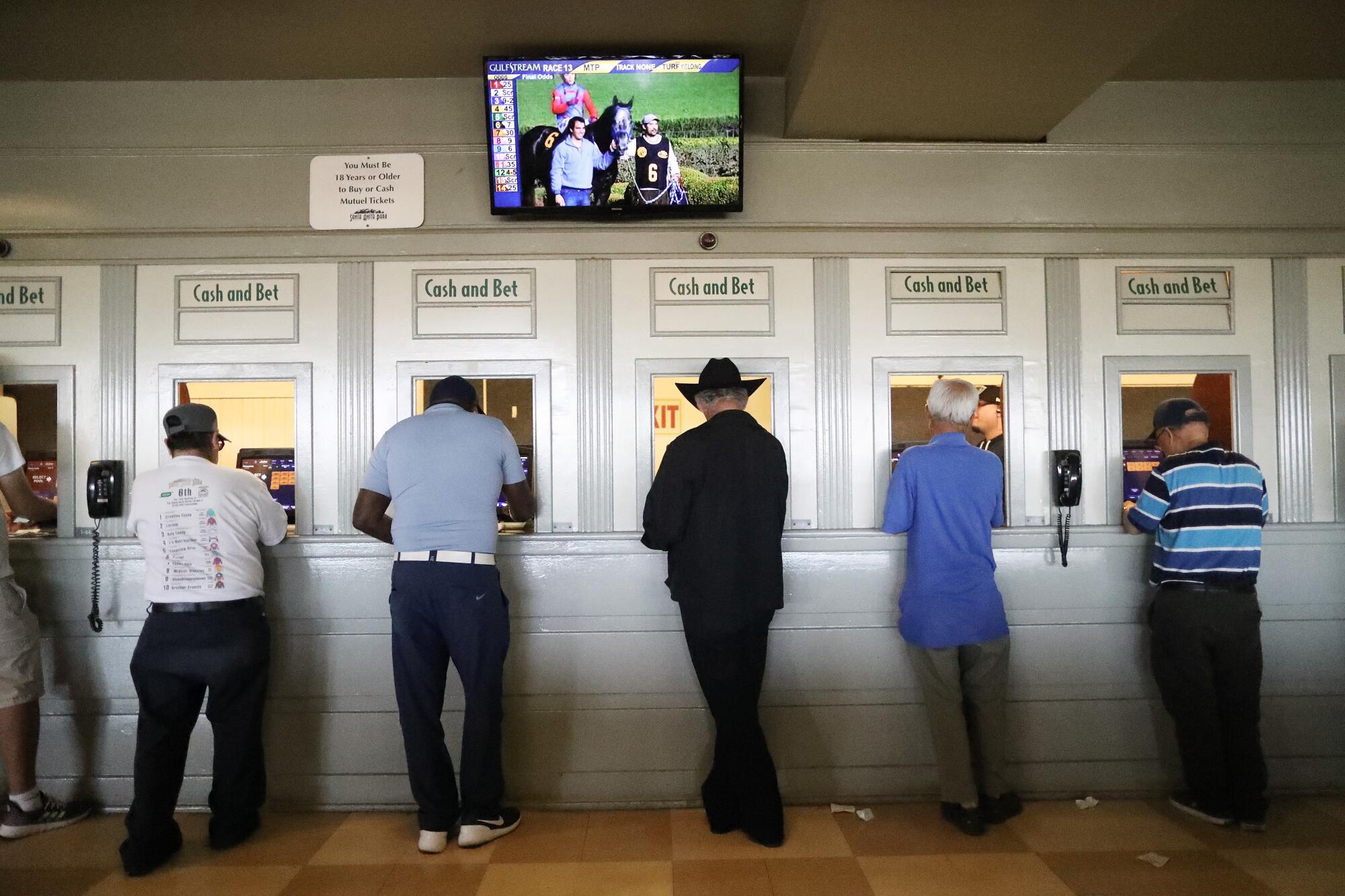
The loss of a track, on its own, would not be enough to set off the fire alarms that are currently ringing throughout the state.
A problem that has to be fixed for the sport to survive is that race purses have to be competitive with other states. They currently are not.
Purses are fueled in part by parimutuel handle, or the amount of money bet on each race. The track makes no more or less money based on the winning payoff amount. It takes its cut off the top by percentage, which can range from the lows teens to the mid-20s depending on the type of wager. Tracks like to see favorites win because if more people win, the more they are likely to bet on the next race.
Bettors like races with a lot of hoses because there are lot more wagering opportunities so they can try to beat the favorite and win more money. How do you get bigger fields? By offering bigger purses so more horses enter a race. It’s easy to see how this becomes a cycle in which you are either going up or spiraling down. California has mostly been the latter.
California is one of the few states that does not have a supplemental form of income, which usually comes through casino gambling.
“Purses are a big problem because you have purses in Kentucky that are supported by the [Kentucky Thoroughbred Development Fund], which comes directly from the Historical Horse Racing product,” Fravel said.
HHR uses video of past races without identifying the races which allows people to bet into a parimutuel pool. It has the legality of being a game of skill , but all the trappings of a slot machine.
“That’s true now in Virginia and New York has income from VLT (video lottery terminals or video slots) wagering at Aqueduct and elsewhere,” Fravel said. “To be competitive at various levels is hard.”
Chaney, whose CHRB would oversee HHR should it be approved by the legislature, sees low purses as the real threat to California racing.
“Our purses just have to be higher or there is a definite expiration date for racing,” he said. “At the end of the day everything is going to be driven by purses. At some point we aren’t going to be competitive to other states and horsemen are not going to be incentivized to come here. It’s quite amazing that currently California has extremely high-level racing with much smaller purses.”
For example, an open company maiden race, for horses that have never won, at Santa Anita has a purse of $65,000 with a 5% cut around the corner. At Gulfstream in Florida, also owned by TSG, it pays $75,000, Aqueduct in New York has a purse of $85,000, and Churchill Downs, bolstered by HHR, pays $120,000.
Add in that California has the highest living and labor costs of these other states and the disadvantage becomes clear.
“Purse money and commissions, which help pay the tracks, trickles down to all the stakeholders, the backstretch, the trainers, the jockeys,” said Nader, adding that without a boost “ we are going to keep having this discussion with a cloud hanging over our head and no one will be entirely comfortable that we will be sustainable over the next five to 10 years.”
What if the worst-case scenario becomes a reality and Santa Anita were to become so valuable as real estate that it just made no sense to continue racing there?
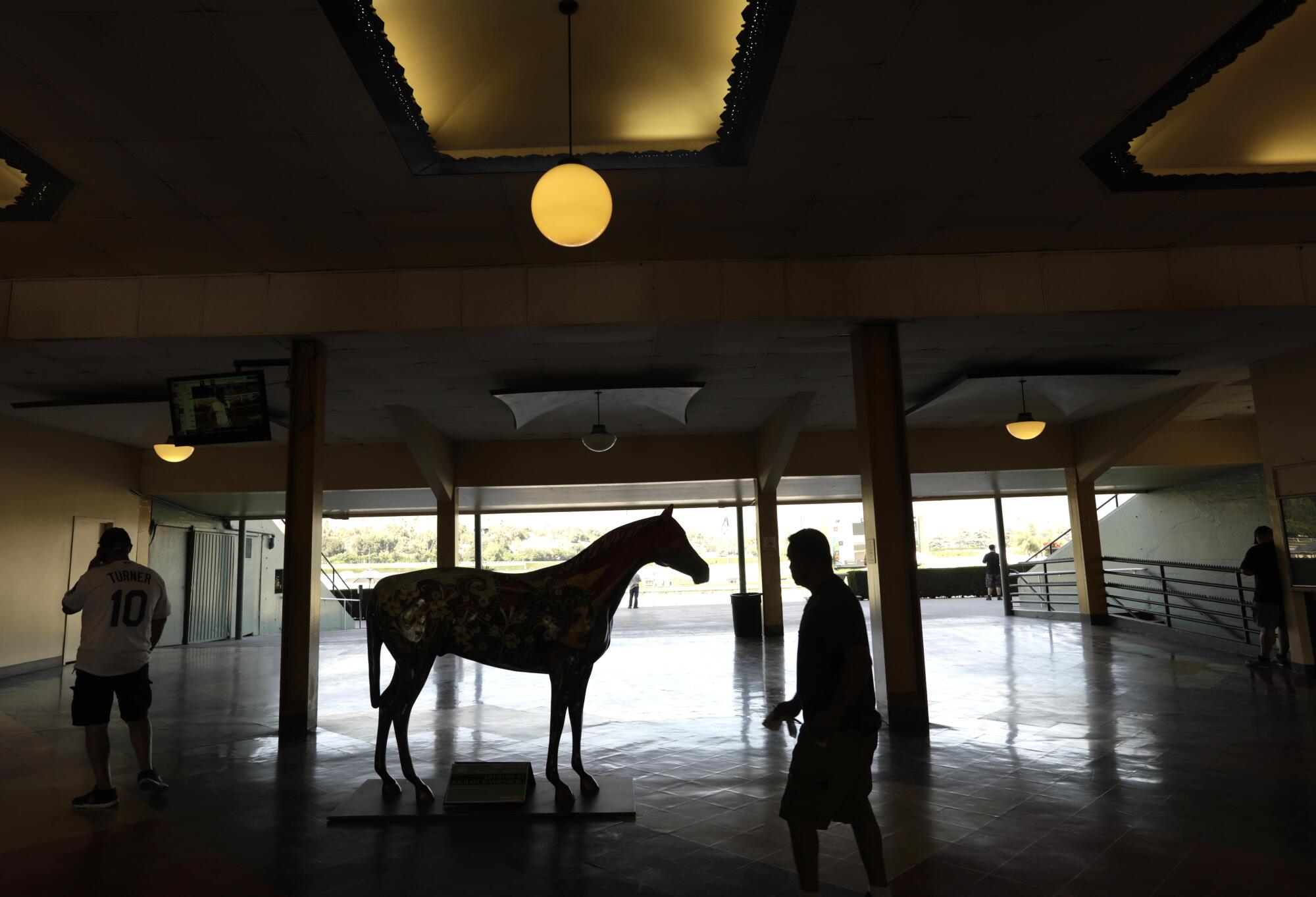
There is, arguably, no more picturesque track in the country than Santa Anita Park, with the sometimes snow-capped San Gabriel Mountains in the background. And think what people would pay to make those 320 acres residential … or possibly commercial.
There is no official price tag on the property but most believe the bidding would start at least at $1 billion.
“I can tell you there are no plans to sell it,” TSG’s Fravel said. “We get inquiries all the time and I pass them along and every time I hear it’s not for sale.”
There is a misconception that Santa Anita could not be developed because pieces of it have been designated as historical landmarks, most notably the parts used as a temporary detention center for Japanese Americans during World War II.
The track was listed on the California Register of Historical Resources after it became eligible for listing on the National Parks Service’s national register in 2006. To make the national register, the owner has to agree to be on it, and that hasn’t happened. So, that might be an easy hurdle for developers to circumvent.
A call and message to the Historic Resource Group in Pasadena for clarification was not returned.
Lisa Lazarus, the chief executive of two-year old HISA, points out that not everything is about money.
“People ask me all the time if the economics for Santa Anita work long term,” Lazarus said. “I can’t answer that per se but what I can say is that people are involved in horse racing for a lot of reasons, and they are often not about making money. They are often about the animal, the history and other things like that.”
What’s the old joke? “How do you make a million in horse racing? Start with $5 million.”
Tom Rooney has been in his role of head of the NTRA for two years after spending five terms as a Republican U.S. Congressman from Florida.
“If we lose Santa Anita, our sport changes for the whole country,” Rooney said. “I think Del Mar would survive, but I don’t know if it’s enough to keep the breeding business going in California. The state is very, very vital for the future of racing to be successful.”
Del Mar certainly doesn’t want Santa Anita, or any track, to go away. Its world would be turned upside down, but as any smart business, it has been working up scenarios should Santa Anita go away.
“You could see us trying to create an unofficial circuit of other independent tracks,” said Josh Rubinstein, president and chief operating officer at Del Mar. “You could look at joining with Keeneland or Oaklawn or maybe some other tracks.”
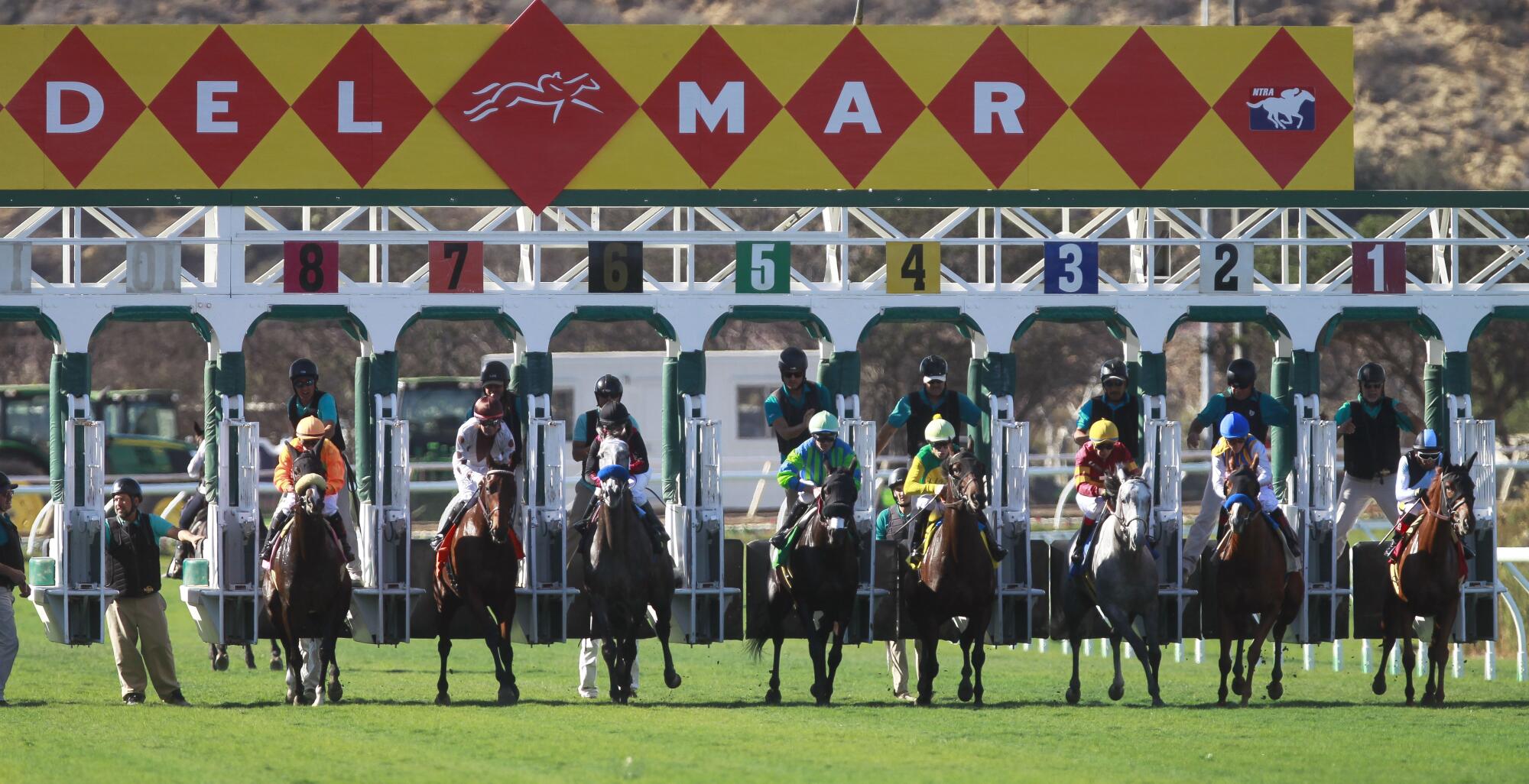
Del Mar could not fill the calendar void if Santa Anita were to be sold. The Del Mar Fairgrounds is owned by the state and it hosts other events.
“There are definite limitations for expanding,” Rubinstein said.
Optimistically, Del Mar could go from four months to six, but an expansion of racing could hurt the boutique feel the track has marketed during its highly successful summer meet.
Alan Foreman, who primarily works in the Mid-Atlantic circuit, was just named ombudsman for HISA. He has spent decades in the business and was on the team that investigated horse deaths in New York in 2012.
“There is a great sense of nervousness in California,” Foreman said. “There isn’t much margin for error. Without gaming in today’s world you are severely challenged. It’s very difficult to be competitive if you’re just relying on handle. There just isn’t enough money in the pipeline to do it.
“They could reimagine Santa Anita, they could downsize, there are a lot of things they could do. But the horse population is difficult when you are self-dependent. You can’t rely on horses coming from out of state.”
Clearly, racing executives know the problems, but what they don’t have are answers they know will work. Maybe they could look for answers from the people who drive the engine, the bettors.
Tom Reynolds is a horse racing gambler, betting about $75,000 a year, down from $90,000 a few years ago. That missing money has shifted to sports wagering. He is a former marketing executive and a current partner in Eclipse Thoroughbreds.
He attended Arizona’s Global Racing Symposium in Tucson earlier this month as an interested observer.
“I’m a big proponent of California racing, especially Southern California because I’m playing at the higher end of horse quality,” Reynolds said.
One of his main gripes is the length of the racing card, which at four or five hours is longer than just about any other sport outside of cricket.
“Handicapping a 12-race is card is time consuming, it’s draining,” Reynolds said. “Stick to eight races a day with multiple betting options and over time you are going to be able to go to four or five days a week after Golden Gate closes if you stick to that model.”
He also has an answer to the small field sizes, something bettors hate.
“I think they should go to a handicap system like the European or Asian model,” Reynolds said. “Get rid of 75 or 80 percent of the claiming races and put the horses in divisions based on their current ability. They can move up and down the handicapping ladder and it makes fields more competitive. And owners would run more often because they won’t be afraid of losing their horse to a claim.”
Fravel likes the idea.
“The rating system might work,” he said. “But it would take a lot of work and cultural change.”
Reynolds is also a fan of fixed-odds wagering, where you get the odds at the time you bet, which is used with bookmakers overseas and has been experimented with in New Jersey.
“The kids 25, 30, 35 years old are betting the NFL, betting the Lakers at +120 or the Rams at +6 and getting fixed odds and they like that,” he said. “That may make them come back more often knowing the price they bet is the price they get.”
Reynolds would also like to see restrictions put on computer assisted bettors, who dump large sums of money just before the gate opens, dramatically changing the odds you see on your wager while the race is in progress.
“You could have non-CAW (computer assisted wagering) pools like they do in New York in the late pick five,” Reynolds said. “You could do it two or three times a day, so the average bettor is playing against the average bettor. People think CAWs are putting in bets after the gate opens, they’re not. It is just an optics issue.”
Despite all the negatives, there are whisps of optimism for the sport. There is a possible agreement that would allow Los Alamitos to run low level — $5,000 claimers — more than 4 1/2 furlongs. It would take legislative approval but could be a home for some transplanted Golden Gate horses.
“If we could be of any service [to the industry] we would do it,” said Dr. Ed Allred, who owns Los Alamitos and helped save Southern California racing after the closure of Hollywood Park by building a mile dirt course.
A final bit of optimism comes from a journalist.
“California racing will survive,” Privman said. “The question is what will the future look like if somehow California can get legislation that enhances purses. California can get back to the level that those who first got interested in racing would like to see.
“It could be on a par with New York as one of the premier race circuits in the country. If that doesn’t happen, I still think there is a future. The circuit could be more like New Jersey, good racing, but not the kind of racing California is used to.”
Imagine that, a fall-back position where California would be like New Jersey.
More to Read
Go beyond the scoreboard
Get the latest on L.A.'s teams in the daily Sports Report newsletter.
You may occasionally receive promotional content from the Los Angeles Times.
